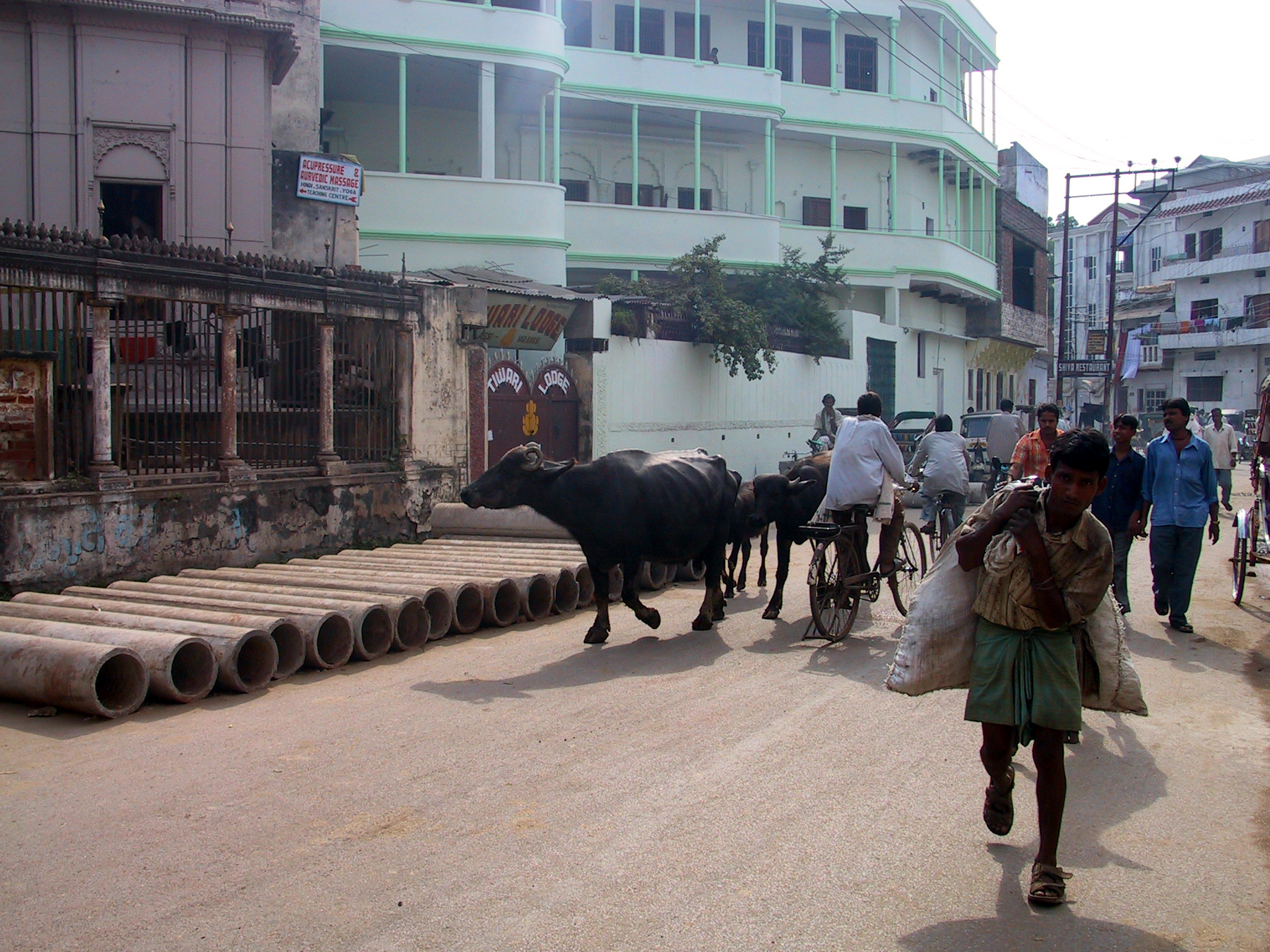
EDITORS’ NOTE: Mitch and Nellie Ingleheart* recently began serving as Southern Baptist representatives to India. They and their children, Peyton* and Rachel*, ask for prayer as they learn a new language, adjust to a different culture and make new friends.
INDIA (BP)–Taste, smell, sight, sound and touch -– there is such an explosion of the senses here in India that at least seven senses are needed to cover everything!
Smell is one of the first senses that bombard a person. Just think in your mind what it would be like to step off a plane and smell a multiplicity of scents. The first odd smell was that of mothballs. Yes, that’s right. Apparently, the Indian people use mothballs as a form of air freshener.
The next smell is that of the pollution. There is no EPA here; therefore, there is much black smoke coming from vehicles, especially auto rickshaws. It was quite an adjustment to get used to, but now we barely notice it.
Now, the good smells –- garlic, ginger, curry, hot chilies and a myriad of spices. The smells draw you to vendors selling all kinds of authentic Indian cuisine. Tea is another fragrant smell. Indians love to mix tea, milk and sugar together and serve it to guests. It is called chai, and it is delicious. They serve it hot and can’t fathom drinking cold “iced” tea.
Sight is the next sense that overwhelms you. There is so much beauty here amidst the dirt and dust. Tropical flowers are like an oasis among the dusty, dirty streets.
Another thing to observe is people driving on the left side of the road. That takes some getting used to, especially when you begin to drive. Some curious things to see are camels, oxen, water buffalo, cows, pigs, goats and donkeys roaming free wherever they want to go. Even yesterday, we were driving down the road and had to stop and wait for a few water buffalo to mosey on down the road.
When Indians acknowledge you, instead of a head nod or shake, they move their head side to side “bobble” style. The trick is to figure out whether they are saying yes or no.
Most people do not have clothes dryers here; therefore, you see rows and rows of brightly colored clothes hanging out to dry. Most women wear saris (long cloths wrapped around the body) or salwar kameezes (long shirts with pants and scarves). They are so brightly and beautifully designed. No two are alike.
Sounds are everywhere in India. The most prominent is the sound of horns. It is courteous to honk your horn here. It warns people that your vehicle is beside them to help prevent an accident. Whistles are often heard as well. Indian “guards” are everywhere -– helping with parking and guarding streets. They blow a whistle to get someone’s attention.
Multiple languages are spoken in India. We hear Hindi most often. It feels good whenever we hear a phrase and know what the person said.
We have power cuts here. That means for about three hours a day, we have no electricity. Sometimes it’s a relief -– no TV noise. Other times it is uncomfortable -– no cool air.
The touch and feeling sense is especially apparent to our kids! People touch Peyton* and Rachel* on their heads and even pinch their cheeks. Indians love to see and touch the kids’ brown hair and light-complexion faces. Another interesting habit of some vendors is to kiss the money that we give them. It is their way to thank their gods for money received
There are so many delicious tastes in India. Most food is spicy even if they say it is not. There are many new fruits and veggies to try in this tropical climate. The chocolates are so good here. They do not have most U.S. brands. Most are from Europe, and they are so creamy and scrumptious. For tea, they serve little yummy biscuits. These are not the biscuits from the United States. Here, biscuits are cookies. Most are made with real butter and melt in your mouth.
This culture intertwines two more “extra” senses. One is emotions. Poverty is so prevalent here. There are people at most traffic intersections begging for money or food. Most beggars have to bathe in a dirty creek bed and wash clothes there. Consequently, their clothes are always a dirty brown color, and their hair is matted and disheveled. Many street dwellers walk down the dirty, rocky roads without shoes. It is not an oddity to see kids walking to school with no shoes, and it tugs at your emotions and heartstrings.
We went to visit a couple on the outskirts of town. They had so little. We gulped when we realized they had water only one hour a day. They did not eat with us. They waited until after we had eaten to see if there was enough for their family to eat. How humbling. When we asked them about their lifestyle, they happily gave thanks to God and shared how blessed they were. How moving that was to us who have water whenever we want it and plenty of food.
Another important “extra” sense is the spiritual condition here. God is working in so many amazing ways. People are trusting in Jesus and eagerly sharing their new faith with friends who inquisitively come to learn more about how they can change. Mitch* is training “ordinary” Indians to share their faith with their friends, family and other circles of influence. They see how easy it is to share what they believe with others. The people don’t just sit there. They go out and do it. It is exciting to hear how these people are leading Indians to believe and trust in Jesus on a weekly basis!
–30–
*Name changed for security reasons. For more information on how to pray for the peoples of South Asia, please write to [email protected]. For information about serving long-term in South Asia, visit www.imb.org and click on “Your Going.” For more information about volunteer needs in South Asia, e-mail [email protected].















